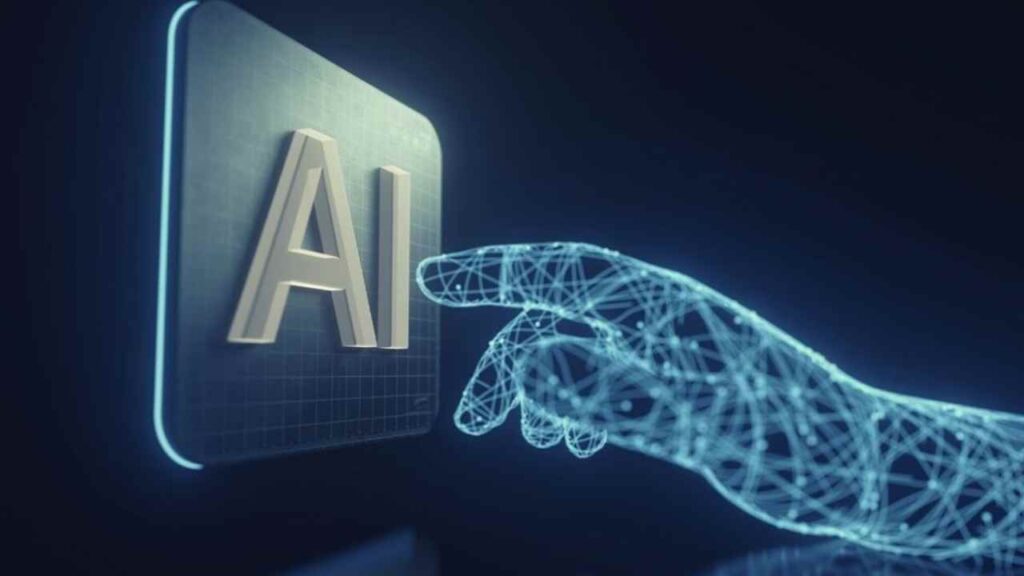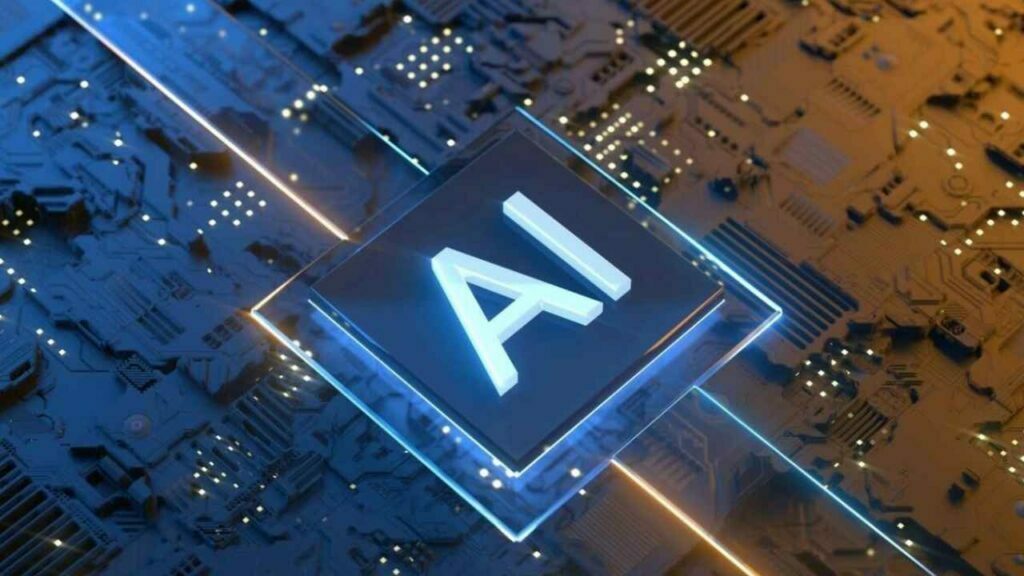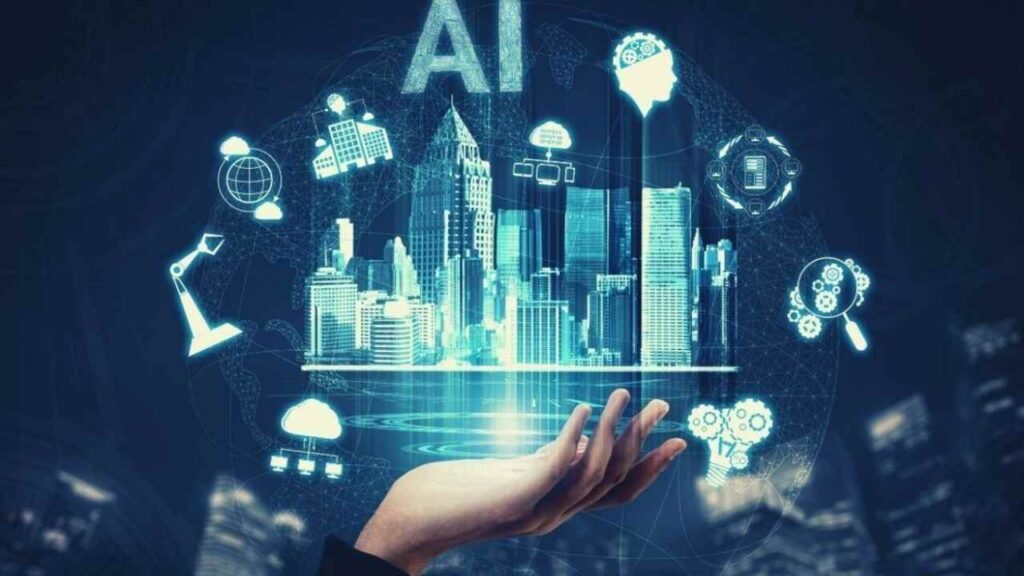The Future of Artificial Intelligence: 4 Major Advancements in AI Technology
What is Artificial Intelligence (AI)
Artificial Intelligence (AI) is a branch of computer science that deals with the development of intelligent machines that can perform tasks that typically require human intelligence, such as understanding natural language, recognizing images and speech, making decisions, and solving problems.
AI systems are designed to mimic human cognitive processes and are capable of learning from data and adapting to new situations. It can be divided into two main categories: narrow AI, which is designed to perform specific tasks, and general AI, which has the ability to perform any intellectual task that a human can. Advancements in AI technology have led to the development of powerful tools and applications that are being used in various fields such as healthcare, finance, transportation, and manufacturing.
The current state of AI technology- AI in Tech
The current state of AI technology is rapidly advancing, with new developments and breakthroughs happening frequently.
AI has made significant progress in recent years, with applications such as image recognition, speech recognition, and natural language processing achieving human-level performance in some cases.
Machine Learning (ML) has become a key technology in AI, allowing systems to learn from data and improve their performance over time. Deep Learning (DL) is a subset of ML, which uses neural networks with many layers to learn from data and make predictions or decisions.
The use of AI technology is also becoming more widespread, with industries such as healthcare, finance, transportation, and manufacturing utilizing AI in various ways. Some examples include:
Healthcare: AI is being used to improve medical imaging, drug development, and disease diagnosis.
Finance: AI is being used for fraud detection, risk analysis, and portfolio management.
Transportation: AI is being used for autonomous vehicles, traffic prediction, and fleet management.
Manufacturing: AI is being used for predictive maintenance, process optimization, and supply chain management.
However, despite these advancements, AI is still a relatively new field and there are many challenges that need to be overcome. Some of these challenges include:
Lack of data: AI systems require large amounts of data to learn from, which can be difficult to obtain in some cases.
Lack of explainability: Some AI systems, particularly those based on deep learning, can be difficult to understand and interpret, making it hard to trust the decisions they make.
Bias: AI systems can learn from and replicate the biases present in their training data, which can lead to unfair or inaccurate decisions.

The purpose of the post is to discuss the future of AI technology and its potential advancements and implications. It aims to provide an understanding of how AI technology is likely to evolve and how it will impact various aspects of society, such as the economy, social interactions, ethics, and politics. The post will explore the potential advancements in AI technology and the ways in which they could transform various industries and fields.
It will also examine the potential implications of AI, both positive and negative, and discuss ways in which these implications can be mitigated. The overall goal of the post is to provide readers with a comprehensive understanding of the future of AI and its impact on society, so that they can make informed decisions about how to prepare for and respond to the changes that AI is likely to bring.
Advancements in AI technology
MACHINE LEARNING
Machine Learning simple definition
Machine Learning (ML) is a subset of AI that deals with the development of algorithms and statistical models that enable machines to learn from data and improve their performance over time, without being explicitly programmed. It involves training a model on a large dataset and then using that model to make predictions or decisions on new data. There are three main types of machine learning:
Supervised Learning: This is the most common type of machine learning, in which the model is trained on labelled data, meaning that the correct output is provided for each input. The model then uses this information to make predictions on new, unseen data. Examples of supervised learning include image recognition, natural language processing, and fraud detection.
Unsupervised Learning: In this type of machine learning, the model is trained on unlabeled data, meaning that the correct output is not provided. The model must find patterns and structure in the data on its own. Examples of unsupervised learning include clustering, anomaly detection, and dimensionality reduction.
Reinforcement Learning: Reinforcement learning is a type of machine learning in which an agent learns by interacting with its environment and receiving feedback in the form of rewards or penalties. It is used in applications such as robotics and game playing.
Machine learning is becoming increasingly powerful and is being used in a wide range of applications, including image recognition, speech recognition, natural language processing, and predictive analytics. With the increasing availability of data and computational power, machine learning is expected to make even more significant advancements in the future, allowing machines to perform more complex tasks and make more accurate predictions.

Advancements in Machine Learning
There have been many advancements in machine learning in recent years. Some of the most significant include:
- Deep Learning: This is a subfield of machine learning that uses neural networks with multiple layers to analyze and process data. It has been used to achieve state-of-the-art results in tasks such as image and speech recognition.
- Natural Language Processing (NLP): This is another subfield of machine learning that deals with understanding and generating human language. NLP has made significant strides in recent years, with the development of models such as BERT, GPT-3, and T5.
- Reinforcement Learning: This is a type of machine learning that focuses on training models to make decisions based on rewards or penalties. It has been used to achieve breakthroughs in areas such as game playing and robotics.
- Generative Adversarial Networks (GANs): GANs are a type of neural network used for generating new data, such as images or text. They have been used to create realistic images, videos, and audio.
- Transfer Learning: It is the ability to use a pre-trained model as a starting point for another task, rather than training a model from scratch. This has become increasingly popular as the amount of available data has grown.
These are just a few examples of the many advancements in machine learning. This field of science and technology is constantly evolving, and new techniques and applications are being developed all the time.
Applications of Machine Learning
There are many applications of machine learning, some of the most common include:
- Image and video analysis: Machine learning can be used to analyse and understand images and videos, such as for object recognition and facial recognition.
- Natural Language Processing (NLP): Machine learning can be used to understand and generate human language, for example, for language translation and text summarization.
- Speech recognition: Machine learning can be used to transcribe and understand speech, such as for voice-controlled assistants like Siri and Alexa.
- Recommender systems: Machine learning can be used to analyze data on user behavior and preferences to make personalized recommendations, such as for music and movie recommendations on streaming services.
- Predictive analytics: Machine learning can be used to make predictions about future events based on historical data, such as for stock market predictions and weather forecasting.
- Anomaly detection: Machine learning can be used to identify patterns and anomalies in data, such as for fraud detection and network intrusion detection.
- Robotics and autonomous systems: Machine learning can be used to train robots and autonomous systems to make decisions and take actions, such as in self-driving cars and drones.
- Healthcare: Machine learning can be used to analyze medical images, predict disease progression, and assist with drug discovery.
These are just a few examples of the many applications of machine learning. The field is constantly evolving and new applications are being developed all the time.

NATURAL LANGUAGE PROCESSING (NLP)
Overview of NLP- Full form of NLP
Natural Language Processing (NLP) is a subfield of artificial intelligence and computer science that focuses on the interaction between computers and human language. The goal of NLP is to enable computers to understand, interpret, and generate human language, making it possible for computers to communicate with humans in a way that is natural and intuitive.
There are several tasks that fall under the umbrella of NLP, including:
Text classification: The task of automatically categorizing text into predefined categories, such as spam detection in email or sentiment analysis in social media posts.
Named entity recognition: The task of identifying and extracting specific information from text, such as the names of people, places, and organizations.
Part-of-speech tagging: The task of identifying the grammatical role of each word in a sentence, such as noun, verb, adjective, etc.
Parsing: The task of analyzing the grammatical structure of a sentence to understand its meaning.
Machine Translation: The task of automatically translating text from one language to another.
Text summarization: The task of automatically creating a shorter version of a text while preserving its most important information.
In recent years, deep learning techniques such as recurrent neural networks (RNNs) and transformer networks have made significant advancements in NLP tasks, such as in language models like BERT and GPT-3. These models are trained on large corpora of text and can be fine-tuned to specific tasks using transfer learning.
Advancements in NLP
There have been many advancements in the field of Natural Language Processing (NLP) in recent years. Some of the most significant include:
- Pre-training: The use of large language models pre-trained on vast amounts of text data has led to significant improvements in a variety of NLP tasks. Models like BERT, GPT-2, and GPT-3 have set new state-of-the-art performance benchmarks for tasks such as language understanding and text generation.
- Fine-tuning: The ability to fine-tune these pre-trained models on smaller, task-specific datasets has made it possible to train models for a wide range of language-based tasks with minimal data and computational resources.
- Attention mechanisms: Attention mechanisms, a technique used in transformer networks, have proved to be very effective in NLP tasks such as machine translation and text summarization by allowing models to focus on specific parts of the input when making predictions.
- Multilingual models: The development of models that can handle multiple languages has made it possible to train models that can perform a wide range of tasks across different languages.
- Transfer learning: The ability to use pre-trained models as a starting point for other tasks has made it possible to train models for a wide range of language-based tasks with minimal data and computational resources.
- Dialogue systems: Advancements in NLP have led to the development of more sophisticated dialogue systems, such as chatbots, which can understand and generate human-like responses in a conversational context.
- Adversarial attacks and robustness: As NLP models are used in more and more sensitive applications, researchers have started to pay more attention to the robustness of these models, and have proposed various methods to make them more robust to adversarial attacks.
These are just a few examples of the many advancements in the field of NLP. The field is constantly evolving, and new techniques and applications are being developed all the time.
Applications of NLP
Natural Language Processing (NLP) has a wide range of applications, some of the most common include:
- Text-to-Speech synthesis: NLP can be used to convert written text into spoken words, such as for virtual assistants like Siri and Alexa.
- Language Translation: NLP can be used to translate text from one language to another, such as for online translation services like Google Translate.
- Sentiment Analysis: NLP can be used to determine the sentiment or emotion expressed in text, such as for analyzing customer feedback or social media posts.
- Text summarization: NLP can be used to automatically create a shorter version of a text while preserving its most important information, such as for news articles or legal documents.
- Text generation: NLP can be used to generate new text, such as for chatbots, language models, and text completion models like GPT-3.
- Information Retrieval: NLP can be used to extract relevant information from unstructured text data, such as for search engines, question answering systems and information extraction.
- Named Entity Recognition: NLP can be used to identify and extract specific information from text, such as the names of people, places, and organizations, which can be useful for various applications such as entity linking and disambiguation.
- Speech recognition: NLP can be used to transcribe and understand speech, such as for voice-controlled assistants like Siri and Alexa.
- Dialogue systems: NLP can be used to develop more sophisticated dialogue systems, such as chatbots, which can understand and generate human-like responses in a conversational context.
These are just a few examples of the many applications of NLP. The field is constantly evolving, and new techniques and applications are being developed all the time.

Computer Vision
Computer Vision Techniques
Computer Vision is a field of study within computer science and artificial intelligence that focuses on the development of algorithms and models for the acquisition, analysis, and understanding of visual information. The goal of computer vision is to enable computers to interpret, understand, and even generate visual information, such as images and videos.
There are several tasks that fall under the umbrella of computer vision, including:
- Image classification: The task of automatically categorizing images into predefined categories, such as recognizing objects or scenes in an image.
- Object detection: The task of identifying and locating objects within an image or video, such as identifying cars and pedestrians in a video stream from a self-driving car.
- Image segmentation: The task of partitioning an image into multiple segments or regions, such as separating the background from the foreground in an image.
- Image restoration: The task of removing noise or restoring a degraded image, such as removing blur from a photograph.
- Image generation: The task of creating new images, such as generating images of faces or landscapes from text descriptions.
Deep learning techniques, particularly convolutional neural networks (CNNs) and Generative Adversarial Networks (GANs), have made significant advancements in computer vision tasks such as object detection and image generation.
Computer Vision has a wide range of applications, including image and video analysis, self-driving cars, robotics, and security systems, among others.
Advancements in Computer Vision
There have been many advancements in the field of Computer Vision in recent years. Some of the most significant include:
- Deep Learning: The use of deep learning techniques, such as convolutional neural networks (CNNs) and Generative Adversarial Networks (GANs), have led to significant improvements in a variety of computer vision tasks, such as object detection and image generation.
- Object Detection: The development of object detection models like YOLO and R-CNN have significantly improved the ability to locate and identify objects in images and videos.
- Image Segmentation: The development of models like Mask R-CNN and U-Net have significantly improved the ability to partition an image into multiple segments or regions.
- Generative Models: GANs and Variational Autoencoders (VAEs) have been used to generate new images and videos, such as for creating realistic images or videos from text descriptions.
- Video Analysis: The development of models and techniques for analyzing videos such as video captioning, action recognition, and video segmentation have improved the ability to understand and interpret the contents of a video.
- Transfer Learning: The ability to use pre-trained models as a starting point for other tasks has made it possible to train models for a wide range of computer vision tasks with minimal data and computational resources.
- Light-Weight Models: The development of smaller, more efficient models such as MobileNet and EfficientNet have made it possible to deploy computer vision models on edge devices with limited computational resources.
- Adversarial attacks and robustness: As computer vision models are used in more sensitive applications, researchers have started to pay more attention to the robustness of these models, and have proposed various methods to make them more robust to adversarial attacks.
These are just a few examples of the many advancements in the field of computer vision. The field is constantly evolving, and new techniques and applications are being developed all the time.
Applications of Computer Vision
Computer Vision has a wide range of applications, some of the most common include:
- Image and Video Analysis: Computer vision can be used to analyze and understand images and videos, such as for object recognition, facial recognition, and action recognition.
- Autonomous Systems: Computer vision can be used to enable self-driving cars, drones, and robots to perceive and navigate their environment.
- Surveillance and Security: Computer vision can be used to monitor and analyze video streams for security purposes, such as identifying suspicious behavior or detecting intrusions.
- Healthcare: Computer vision can be used to analyze medical images, such as x-rays and MRI scans, for diagnostic and research purposes.
- Augmented and Virtual Reality: Computer vision can be used to create more realistic and immersive augmented and virtual reality experiences by analyzing and understanding the user’s environment.
- Robotics: Computer vision can be used to enable robots to perceive and understand their environment, such as for object recognition and grasping.
- Manufacturing: Computer vision can be used to inspect and quality control products, such as for identifying defects in manufactured goods.
- Agriculture: Computer vision can be used to monitor and analyze crops and soil, such as for precision farming and early detection of crop diseases.
- Advertising and Marketing: Computer vision can be used to analyze customer behavior and preferences, such as for targeted advertising and product recommendations.
These are just a few examples of the many applications of computer vision. The field is constantly evolving, and new techniques and applications are being developed all the time.

Robotics and Automation
Overview of Robotics and Automation
Robotics and Automation is a field of study that involves the design, construction, and operation of robots and automated systems. It encompasses a wide range of technologies, including mechanical engineering, electrical engineering, computer science, and artificial intelligence. The goal of robotics and automation is to create machines that can perform tasks autonomously or with minimal human supervision.
There are several tasks that fall under the umbrella of robotics and automation, including:
- Manipulation: The ability of a robot to grasp, move, and manipulate objects in its environment, such as for manufacturing and assembly tasks.
- Navigation: The ability of a robot to move and navigate in its environment, such as for self-driving cars and drones.
- Perception: The ability of a robot to perceive and understand its environment, such as for object recognition and obstacle avoidance.
- Planning: The ability of a robot to plan and execute tasks, such as for autonomous decision-making and control.
- Machine Learning: The use of machine learning techniques, such as deep learning and reinforcement learning, to train robots to perform tasks and adapt to new situations.
Robotics and automation has a wide range of applications, including manufacturing, transportation, healthcare, agriculture, and many more. With the advancements in technologies such as machine learning, computer vision and AI, robots and automated systems are becoming more intelligent, flexible, and capable of performing a wider range of tasks.
Advancements in Robotics and Automation
There have been many advancements in the field of Robotics and Automation in recent years. Some of the most significant include:
- Machine Learning: The use of machine learning techniques, such as deep learning and reinforcement learning, has led to significant improvements in robot perception, control, and decision-making.
- Computer Vision: The integration of computer vision technologies, such as object recognition and image segmentation, has improved the ability of robots to perceive and understand their environment.
- Manipulation and grasping: Advancements in robot grasping and manipulation, such as the development of more advanced grippers and the integration of tactile sensing, have improved the ability of robots to handle a wider range of objects.
- Mobility: The development of more advanced and efficient forms of mobility, such as legged robots and drones, have expanded the range of environments and tasks that robots can perform.
- Collaborative robots: The development of robots that can safely interact and collaborate with humans in shared workspaces, such as cobots, has opened new opportunities for robots to work alongside humans in various industries.
- Soft Robotics: The development of soft, flexible robots, made of materials such as silicone, that are able to conform to the shape of the objects they interact with and can be used in applications such as grasping fragile objects.
- Human-Robot Interaction: The advancements in human-robot interaction (HRI) have led to the creation of robots that are able to understand and respond to human gestures, facial expressions, and speech, allowing for more natural and intuitive interaction.
- Edge computing: The ability to process data on the device, rather than in the cloud or a remote server, is allowing robots to operate in areas with limited or no connectivity, and making them more autonomous.
These are just a few examples of the many advancements in the field of Robotics and Automation. The field is constantly evolving, and new techniques and applications are being developed all the time.
Applications of Robotics and Automation
Robotics and Automation has a wide range of applications, some of the most common include:
- Manufacturing: Robotics and automation are widely used in manufacturing for tasks such as assembly, welding, and painting, as well as for quality control and inspection.
- Transportation: Robotics and automation are used in transportation for tasks such as self-driving cars and drones, as well as for warehouse automation and logistics.
- Healthcare: Robotics and automation are used in healthcare for tasks such as surgical assistance, rehabilitation, and medical imaging analysis.
- Agriculture: Robotics and automation are used in agriculture for tasks such as crop monitoring, harvesting, and planting.
- Construction: Robotics and automation are used in construction for tasks such as building inspections, surveying and mapping, and heavy equipment operation.
- Retail: Robotics and automation are used in retail for tasks such as inventory management, warehouse automation, and customer service.
- Mining: Robotics and automation are used in mining for tasks such as drilling, blasting, and hauling.
- Defense: Robotics and automation are used in defense for tasks such as surveillance, reconnaissance, and bomb disposal.
- Entertainment: Robotics and automation are used in entertainment for tasks such as animatronics and special effects.
These are just a few examples of the many applications of Robotics and Automation. The field is constantly evolving, and new techniques and applications are being developed all the time.
Other advancements in AI technology
There have been many advancements in the field of Artificial Intelligence (AI) in recent years, some of the most significant include:
- Deep Learning: The use of deep learning techniques, such as convolutional neural networks (CNNs) and recurrent neural networks (RNNs), have led to significant improvements in a variety of AI tasks, such as image and speech recognition, and natural language processing.
- Reinforcement Learning: The use of reinforcement learning has led to breakthroughs in areas such as game playing and robotics, and has potential applications in autonomous systems and decision-making.
- Generative Models: Generative models, such as Generative Adversarial Networks (GANs) and Variational Autoencoders (VAEs) have been used to generate new data such as images, videos, and text.
- Transfer Learning: The ability to use pre-trained models as a starting point for other tasks has made it possible to train models for a wide range of AI tasks with minimal data and computational resources.
- Edge AI: Advancements in hardware and software have made it possible to deploy AI models on edge devices with limited computational resources, this allows for real-time processing and decision-making without the need of a cloud connection.
- Explainable AI (XAI): The increasing use of AI in high-stakes decision-making, such as healthcare and finance, has led to a growing need for models that can be transparently understood and explained.
- Adversarial attacks and robustness: As AI models are used in more and more sensitive applications, researchers have started to pay more attention to the robustness of these models, and have proposed various methods to make them more robust to adversarial attacks.
- Federated Learning: The ability to train models on distributed data sources without the need to share or collect data in a central location, this allows for preserving privacy and security of data, and enables the use of AI in scenarios where data is distributed among different organizations or individuals.
- Multi-modal AI: The integration of multiple modalities such as vision, speech, and text to improve the performance of AI models and enable them to better understand and interact with the world.
- Meta-learning: The ability to train models that can learn to learn, which allows them to adapt to new tasks and environments quickly, with minimal data and computational resources.
- Natural Language Processing (NLP) : Advancements in NLP such as Pre-training, fine-tuning, and transfer learning have led to the development of more sophisticated language models such as BERT, GPT-2 and GPT-3 that can be fine-tuned to specific tasks with minimal data and computational resources.
Implications of AI technology
Economic implications
The economic implications of AI technology are wide-ranging and complex, with both potential benefits and risks.
- Impact on job market: AI technology has the potential to automate many tasks and processes, which could lead to job displacement in certain sectors. This could result in social and economic challenges for those who lose their jobs, such as increased unemployment and income inequality. However, it may also create new jobs and opportunities in areas such as AI development and deployment.
- Impact on industries and businesses: AI technology has the potential to improve efficiency and productivity in a wide range of industries, leading to increased economic growth and higher living standards. It can also drive innovation and entrepreneurship, leading to the creation of new products, services, and business models. However, it may also disrupt traditional industries, leading to the emergence of new market leaders and changes in the competitive landscape. Additionally, there may be a shift in the ownership and control of data, as well as changes in the way that businesses operate and compete.
Social implications
- Impact on human interaction and communication: AI technology has the potential to change the way that people interact and relate to each other, as well as to machines. For example, the increasing use of AI-powered virtual assistants and chatbots could lead to a reduction in face-to-face human interaction. Additionally, AI-powered language models and machine learning can also change the way we communicate, both in terms of language, tone, and content.
- Impact on privacy and security: AI technology raises a wide range of privacy and security concerns, such as the collection, storage, and use of personal data, as well as the potential for AI systems to be used for mass surveillance or cyber attacks. Additionally, the increasing use of AI in areas such as healthcare, finance, and transportation can lead to sensitive personal information being accessed and shared without the individual’s knowledge or consent. The use of AI in criminal investigations and law enforcement also raises concerns about civil liberties and privacy. As a result, there is a growing need for regulations, standards, and best practices to ensure that AI technology is used responsibly and ethically.
Ethical implications
- Impact on decision-making and accountability: AI technology has the potential to automate and augment decision-making in a wide range of areas such as healthcare, finance, and transportation. However, this also raises ethical questions about accountability and transparency when decisions are made by AI systems. For example, it can be difficult to understand the reasoning behind certain decisions made by AI, and it can be challenging to hold individuals or organizations accountable for the actions of autonomous systems.
- Impact on bias and discrimination: AI technology has the potential to perpetuate or amplify existing biases and discrimination in society, such as in areas such as hiring and lending, if the data used to train AI models is biased. Additionally, the lack of diversity in the field of AI can also perpetuate these biases as the majority of the decision-making is done by a small subset of the population. Furthermore, bias can also be introduced in the data itself, or through the way it is collected, labelled and stored. It is important to acknowledge these biases, and take steps to mitigate them through techniques such as fairness and explainability, to ensure that AI systems do not discriminate against certain groups of people.
Political implications
- Impact on governance and policy-making: AI technology has the potential to impact governance and policy-making in a number of ways. For example, the use of AI in areas such as healthcare, finance, and transportation can lead to the need for new regulations, standards, and best practices to ensure that AI technology is used responsibly and ethically. Additionally, the use of AI in areas such as surveillance and law enforcement can raise concerns about civil liberties and privacy, and may require new legal frameworks and oversight mechanisms. The use of AI in political decision-making, such as predicting voter behavior and campaigning, can also raise concerns about the role of AI in shaping public opinion and influencing political outcomes.
- Impact on international relations: AI technology has the potential to impact international relations in a number of ways. For example, the increasing use of AI in areas such as military and intelligence can raise concerns about the proliferation of autonomous weapons and the potential for AI-powered cyber attacks. Additionally, the use of AI in areas such as trade, finance, and transportation can raise concerns about the implications of AI for economic and political power, and may lead to new forms of competition and cooperation among nations. The lack of standardization and regulation of AI can also lead to disparities in the access and use of AI technology among nations, which can contribute to further geopolitical tensions.
Summary of key points discussed
- Artificial Intelligence (AI) has the potential to bring about significant economic and social changes, with both potential benefits and risks.
- Advancements in AI technology include deep learning, reinforcement learning, generative models, transfer learning, edge AI and meta-learning, among others.
- Economic implications of AI include job displacement, productivity gains, industry disruption, income inequality and changes in the labor market.
- Social implications of AI include changes in human interactions and relationships, privacy and security concerns, bias and discrimination, societal and ethical issues, and dependence on technology.
- Ethical implications of AI include impact on decision-making and accountability, and impact on bias and discrimination.
- Political implications of AI include impact on governance and policy-making, and impact on international relations.
Future of Artificial Intelligence
- The future of AI is likely to bring about even more significant changes in society, as the technology continues to evolve and become more sophisticated.
- AI has the potential to greatly improve our lives by automating repetitive tasks, analyzing large data sets, and making better decisions.
- At the same time, there will be challenges and risks as well, such as job displacement, privacy concerns and ethical challenges.
- Therefore, it is important to continue to monitor and regulate the development and use of AI, to ensure that the benefits are maximized while minimizing any negative impacts.
The Knowledge Hub is intended for a wide range of audiences, including students, professionals, and anyone who is curious about the world and wants to expand their knowledge base. It can be useful for research, education, and personal curiosity. The Knowledge Hub is constantly updated to reflect the latest information and insights, and our visitors are encouraged to check back often for new content. Thank You.
We also have live online classes where we teach 2 courses which are given below. Please go through them and if interested you can take a Free Trial Class.






